 Woodworking projects are something I really enjoy. But at the end of the day, after I?ve finished sanding something and it?s ready to be painted, stained or coated with urethane, you can bet that applying finish is the part of the project I hate the most. Smelly stains, mind numbing fumes and toxic chemical cleanup, makes me leave a lot of my wood projects like I leave my ladies ? naked and waiting to be finished. Just kidding, I don?t have any ladies. If you?re anything like I am: you hate smelly paint fumes, loathe cleaning up brushes and are alone on Friday nights. You can also bet that finishing your favorite home improvement projects is the part of the project you despise. Get rid of the stinky stains and putrid paints, go green and use these cool techniques for finishing your wood projects naturally. You?ll be sure to get a good finish without the toxic trouble. As far as a date for Friday night, these tips will absolutely not help at all.
Woodworking projects are something I really enjoy. But at the end of the day, after I?ve finished sanding something and it?s ready to be painted, stained or coated with urethane, you can bet that applying finish is the part of the project I hate the most. Smelly stains, mind numbing fumes and toxic chemical cleanup, makes me leave a lot of my wood projects like I leave my ladies ? naked and waiting to be finished. Just kidding, I don?t have any ladies. If you?re anything like I am: you hate smelly paint fumes, loathe cleaning up brushes and are alone on Friday nights. You can also bet that finishing your favorite home improvement projects is the part of the project you despise. Get rid of the stinky stains and putrid paints, go green and use these cool techniques for finishing your wood projects naturally. You?ll be sure to get a good finish without the toxic trouble. As far as a date for Friday night, these tips will absolutely not help at all.
Linseed Oil
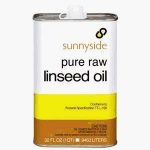
A popular linseed oil on Amazon
Linseed oil, also known as flaxseed oil, is a yellowish, syrupy oil that is derived from the tiny seeds of flax plants. The oil is pressed or extracted and concentrated using a solvent extraction process. It?s full of Omega-3 fatty acids ? health nuts love to eat the stuff. If you go that route, make sure you?re consuming oil designed to be consumed, not just applied to wood ? many linseed oil products have additives which render them unsafe for eating / drinking.Because of its high fat content, linseed oil known as a ?drying oil?. This is because after the fat in the oil dries, it hardens like a rock. That?s why it?s used in so many food, household and building products. It?s in vitamins, varnishes, cheeses, paints, resins and plasticizers ? all sorts of products ? it?s even what holds linoleum floors together (it?s the ?lin? in ?linoleum?)!
But in its liquid form, it works great for wood finishing projects. Boiled linseed oil is excellent for finishing wood. Just wipe on with a rag and wipe off with another. Dry and repeat. Works great for butcher blocks as a food grade finish (again make sure the particular linseed product you use is safe for food contact).
*Warning ? linseed oil is highly combustible. Linseed oil soaked rags can spontaneously combust, so be sure to dispose of them properly instead of storing them away for future use. Many a shop, garage and even home has been lost to a soaked linseed rag tossed in a pile. Don?t take any chances.
Vinegar Stains
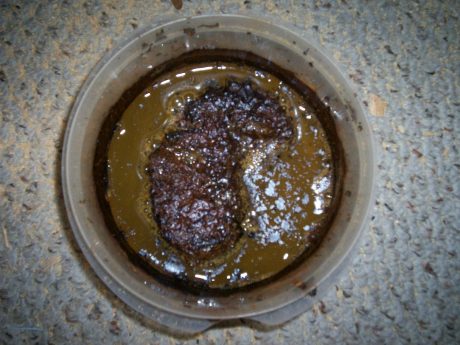
Week old vinegar stain. Looks bad but works great!
Oil and water-based chemical wood stains can make sure that your hands end up sticky, smelly and stained ? even when you use gloves. And because of the strong chemicals used to make wood stain products, it seems like as soon as you open up a can of a heavy duty oil-based stain for your next woodworking project, you catch a buzz that?s likely to make you forget math.
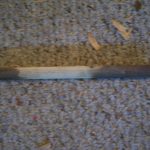
Vinegar stain applied in various stages of color
Skip out on the nasty brain-numbing stinky stains and create your own natural stain using a vinegar-based recipe. These are super easy to make yourself and work great for staining any wood to any shade you can want. It only takes a little bit of white distilled vinegar, a plastic bucket and a piece of steel wool. Soak the steel wool in the vinegar overnight and get a nice red stain. Let it sit for days and get a rich dark stain. Paint in on, wipe it on or pour it on to stain wood.Caution! This will make you smell like a salad.
Beeswax
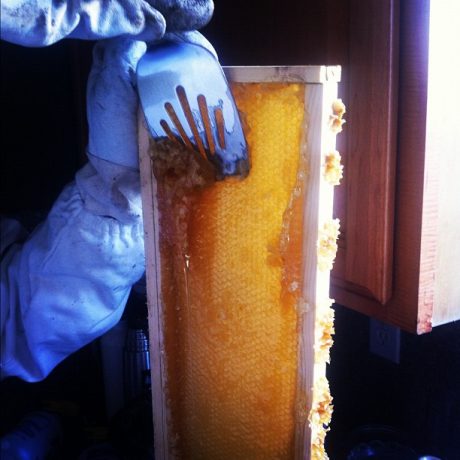
Photo ? The Agoff Family Master Beekeepers
Besides making delicious honey and viciously stinging those who attempt to hijack it, bees make beeswax. This wax secretion from the bee is used to create the hive combs that store the pollen, honey and the baby bees. It is estimated that an entire bee hive has to fly a combined total of 150,000 miles to produce just one pound of beeswax. That?s about six times around the earth! Busy bee indeed.
Beeswax works excellent for sealing food grade wood surfaces. Baby toys especially benefit from this wood sealant. You?ll need to melt and mix the beeswax with linseed or Tung oil to make it liquid-enough to be able to spread it onto your wood projects.
Tung Oil
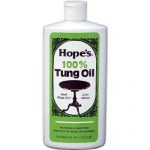 Another one of the ?dry oils? in the drying oil family. It comes from a seed on the Tung plant and just like linseed oil; its high fat content makes it great for creating a barrier that protects many wood projects well. While it?s not impervious to water damage, it does protect wood from water better than some other drying oils.
Another one of the ?dry oils? in the drying oil family. It comes from a seed on the Tung plant and just like linseed oil; its high fat content makes it great for creating a barrier that protects many wood projects well. While it?s not impervious to water damage, it does protect wood from water better than some other drying oils.
Tung oil is often touted as an eco-friendly ingredient in stains, varnishes and paints ? but it does have to get here from China. Only in China do these trees grow and just like there are so many Chens in a Chinese phonebook, there are many fake products that claim they are natural because they use Tung oil. Be wary of Tung oil that?s not 100 percent pure Tung oil. It may contain polymers, resin and chemicals that are toxic and not natural at all.
Check out these Amazon links for a variety of Linseed and Tung Oil products to choose from:
Linseed Oils
Tung Oils
"Did you like this? Subscribe!"
Get HomeFixated updates straight to your inbox once a week. Your email address will never be shared
 |
Source: http://homefixated.com/eco-friendly-wood-finishes/
nfl draft d rose iman shumpert mayweather vs cotto shumpert hopkins hopkins
No comments:
Post a Comment
Note: Only a member of this blog may post a comment.